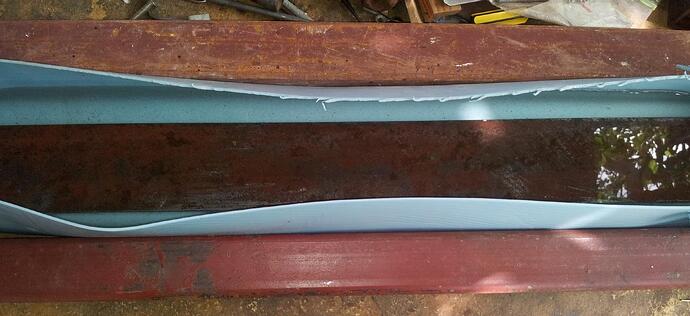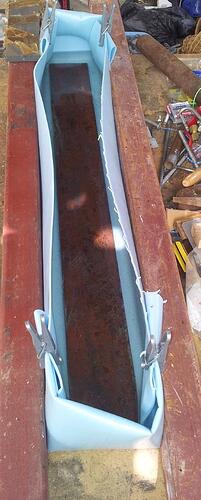I started with a piece of 3" x 3/8" steel strip that was painted, bent, fairly badly corroded and on top of that, it had a couple of dings in it. I’ve cleaned it up in an acid bath and used a piece of `pretend granite’ as a surface guage to hand-scrape the metal as best I could. It’s taken a fair bit of time.
The bed is 2" square steel tube with a 3/16 cross sctional thikckness. I’ve welded some legs from the same material (please do not look too closely at my welding. I know there my talents lie and welding is not one of them:). The bed was drilled and tapped and the steel for the ways - the 3" x x3/8" was drilled and countersunk.
The cross-slide carriage is welded up from bits-'n-pieces and similarly drilled and tapped to accommodate the cross-slide ways. A tools rest was knocked up from some 3/8" cut to 2"sq and variously bolted, welded and rivetted. The fabricated piece is based on Romig’s tool holder but this one is not expected to have a very impressive longevity. In fact, that’s true of the lathe in general. If the prototype works well enough, I’d consider buying some good steel from Bohler Uddeholm and building a better machine. No point spending money if the prototype doesn’t work with a reasonable degree of accuracy, though.
Since the last photo was taken, the tool-holder was ground and blued. The next task is to cast a cross-slide hand-wheel and fit the handwheel and the journals that I cast today.
Those who are familiar with the work of yeomans, Romig, G.B. Round and David Gingery will see some similarities to each if these. I’ve taken what I like - or what I can fabricate without access to machine tools, and done the best I can with what I have to work with:)

